Chengyu Wu
Multi-modal Intermediate Feature Interaction AutoEncoder for Overall Survival Prediction of Esophageal Squamous Cell Cancer
Aug 23, 2024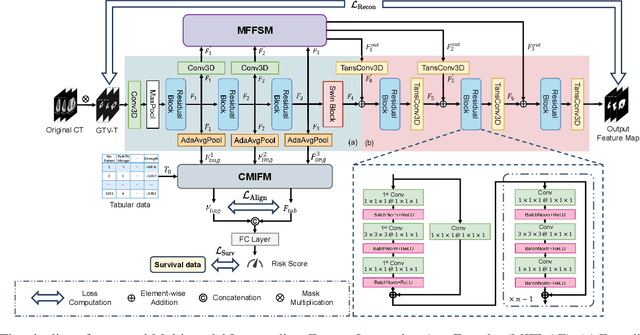
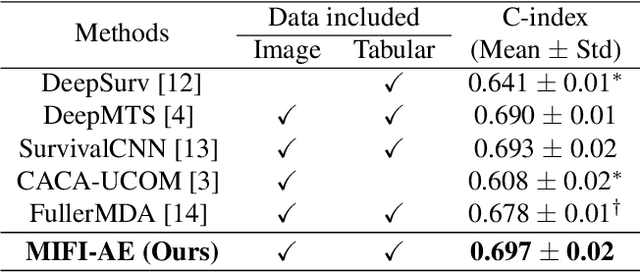
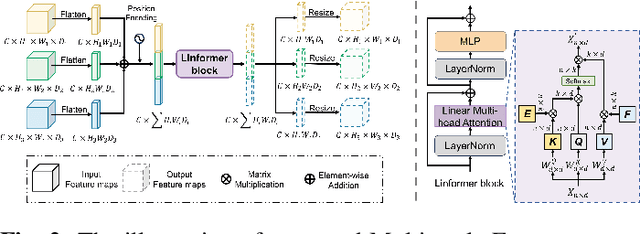
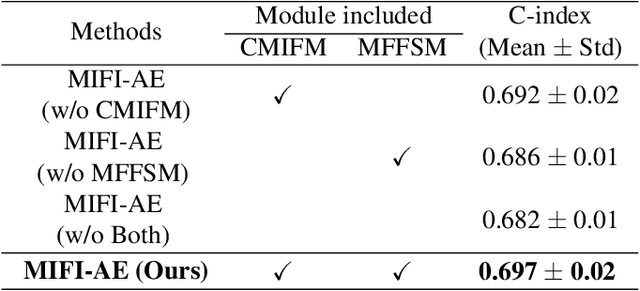
Abstract:Survival prediction for esophageal squamous cell cancer (ESCC) is crucial for doctors to assess a patient's condition and tailor treatment plans. The application and development of multi-modal deep learning in this field have attracted attention in recent years. However, the prognostically relevant features between cross-modalities have not been further explored in previous studies, which could hinder the performance of the model. Furthermore, the inherent semantic gap between different modal feature representations is also ignored. In this work, we propose a novel autoencoder-based deep learning model to predict the overall survival of the ESCC. Two novel modules were designed for multi-modal prognosis-related feature reinforcement and modeling ability enhancement. In addition, a novel joint loss was proposed to make the multi-modal feature representations more aligned. Comparison and ablation experiments demonstrated that our model can achieve satisfactory results in terms of discriminative ability, risk stratification, and the effectiveness of the proposed modules.
STS MICCAI 2023 Challenge: Grand challenge on 2D and 3D semi-supervised tooth segmentation
Jul 18, 2024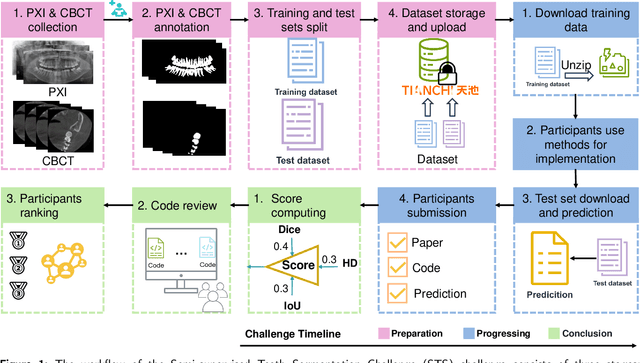


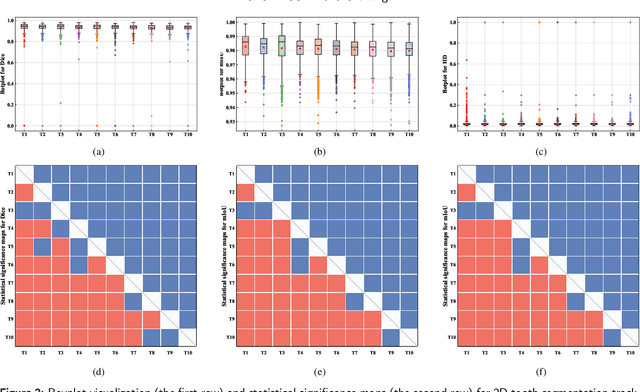
Abstract:Computer-aided design (CAD) tools are increasingly popular in modern dental practice, particularly for treatment planning or comprehensive prognosis evaluation. In particular, the 2D panoramic X-ray image efficiently detects invisible caries, impacted teeth and supernumerary teeth in children, while the 3D dental cone beam computed tomography (CBCT) is widely used in orthodontics and endodontics due to its low radiation dose. However, there is no open-access 2D public dataset for children's teeth and no open 3D dental CBCT dataset, which limits the development of automatic algorithms for segmenting teeth and analyzing diseases. The Semi-supervised Teeth Segmentation (STS) Challenge, a pioneering event in tooth segmentation, was held as a part of the MICCAI 2023 ToothFairy Workshop on the Alibaba Tianchi platform. This challenge aims to investigate effective semi-supervised tooth segmentation algorithms to advance the field of dentistry. In this challenge, we provide two modalities including the 2D panoramic X-ray images and the 3D CBCT tooth volumes. In Task 1, the goal was to segment tooth regions in panoramic X-ray images of both adult and pediatric teeth. Task 2 involved segmenting tooth sections using CBCT volumes. Limited labelled images with mostly unlabelled ones were provided in this challenge prompt using semi-supervised algorithms for training. In the preliminary round, the challenge received registration and result submission by 434 teams, with 64 advancing to the final round. This paper summarizes the diverse methods employed by the top-ranking teams in the STS MICCAI 2023 Challenge.
Exploring Graph-based Knowledge: Multi-Level Feature Distillation via Channels Relational Graph
May 16, 2024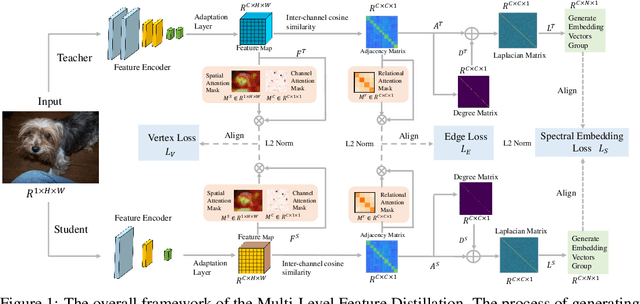
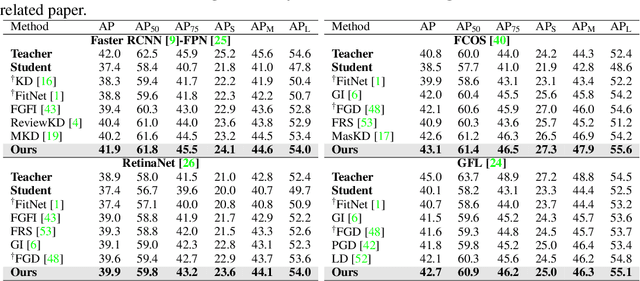

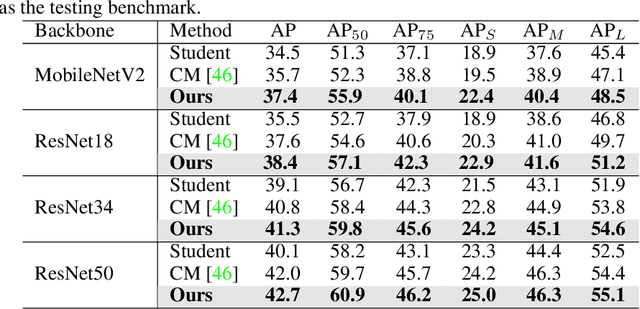
Abstract:In visual tasks, large teacher models capture essential features and deep information, enhancing performance. However, distilling this information into smaller student models often leads to performance loss due to structural differences and capacity limitations. To tackle this, we propose a distillation framework based on graph knowledge, including a multi-level feature alignment strategy and an attention-guided mechanism to provide a targeted learning trajectory for the student model. We emphasize spectral embedding (SE) as a key technique in our distillation process, which merges the student's feature space with the relational knowledge and structural complexities similar to the teacher network. This method captures the teacher's understanding in a graph-based representation, enabling the student model to more accurately mimic the complex structural dependencies present in the teacher model. Compared to methods that focus only on specific distillation areas, our strategy not only considers key features within the teacher model but also endeavors to capture the relationships and interactions among feature sets, encoding these complex pieces of information into a graph structure to understand and utilize the dynamic relationships among these pieces of information from a global perspective. Experiments show that our method outperforms previous feature distillation methods on the CIFAR-100, MS-COCO, and Pascal VOC datasets, proving its efficiency and applicability.
MMFusion: Multi-modality Diffusion Model for Lymph Node Metastasis Diagnosis in Esophageal Cancer
May 16, 2024Abstract:Esophageal cancer is one of the most common types of cancer worldwide and ranks sixth in cancer-related mortality. Accurate computer-assisted diagnosis of cancer progression can help physicians effectively customize personalized treatment plans. Currently, CT-based cancer diagnosis methods have received much attention for their comprehensive ability to examine patients' conditions. However, multi-modal based methods may likely introduce information redundancy, leading to underperformance. In addition, efficient and effective interactions between multi-modal representations need to be further explored, lacking insightful exploration of prognostic correlation in multi-modality features. In this work, we introduce a multi-modal heterogeneous graph-based conditional feature-guided diffusion model for lymph node metastasis diagnosis based on CT images as well as clinical measurements and radiomics data. To explore the intricate relationships between multi-modal features, we construct a heterogeneous graph. Following this, a conditional feature-guided diffusion approach is applied to eliminate information redundancy. Moreover, we propose a masked relational representation learning strategy, aiming to uncover the latent prognostic correlations and priorities of primary tumor and lymph node image representations. Various experimental results validate the effectiveness of our proposed method. The code is available at https://github.com/wuchengyu123/MMFusion.
FDNet: Feature Decoupled Segmentation Network for Tooth CBCT Image
Nov 11, 2023Abstract:Precise Tooth Cone Beam Computed Tomography (CBCT) image segmentation is crucial for orthodontic treatment planning. In this paper, we propose FDNet, a Feature Decoupled Segmentation Network, to excel in the face of the variable dental conditions encountered in CBCT scans, such as complex artifacts and indistinct tooth boundaries. The Low-Frequency Wavelet Transform (LF-Wavelet) is employed to enrich the semantic content by emphasizing the global structural integrity of the teeth, while the SAM encoder is leveraged to refine the boundary delineation, thus improving the contrast between adjacent dental structures. By integrating these dual aspects, FDNet adeptly addresses the semantic gap, providing a detailed and accurate segmentation. The framework's effectiveness is validated through rigorous benchmarks, achieving the top Dice and IoU scores of 85.28% and 75.23%, respectively. This innovative decoupling of semantic and boundary features capitalizes on the unique strengths of each element to significantly elevate the quality of segmentation performance.
 Add to Chrome
Add to Chrome Add to Firefox
Add to Firefox Add to Edge
Add to Edge